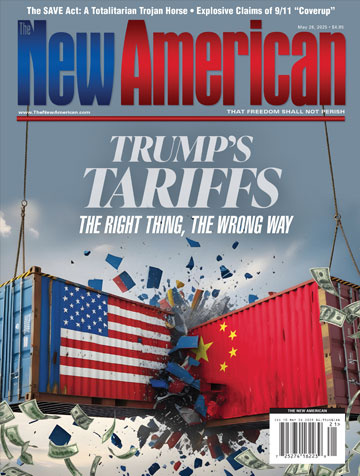
Hawaii’s ban of butterfly knives has been declared unconstitutional by a federal court.
In Hawaii, it is a misdemeanor knowingly to manufacture, sell, transfer, transport, or possess a butterfly knife — no exceptions.
The judges of the Ninth Circuit Court of Appeals held that “Hawaii has not demonstrated that its ban on butterfly knives is consistent with this Nation’s historical tradition of regulating arms,” Judge Carlos Bea wrote regarding the case of Teter v. Lopez.
Referring specifically to the Second Amendment, the official summary of the case explained:
The panel held that possession of butterfly knives is conduct covered by the plain text of the Second Amendment. Bladed weapons facially constitute “arms” within the meaning of the Second Amendment, and contemporaneous sources confirm that at the time of the adoption of the Second Amendment, the term “arms” was understood as generally extending to bladed weapons, and by necessity, butterfly knives. The Constitution therefore presumptively guarantees keeping and bearing such instruments for self-defense.
Furthermore, “Hawaii cited no analogues in which Congress, or any state legislature, imposed an outright ban on the possession of pocketknives close in time to the Second Amendment’s adoption in 1791, or the Fourteenth Amendment’s adoption in 1868.”
That’s because the idea that knives wouldn’t qualify as “arms” under the Second Amendment is not something that would have occurred to the framers of the U.S. Constitution.
One of our Founding Fathers most noted for his defense and explanation of the Second Amendment was Tench Coxe of Pennsylvania. In a letter to the Pennsylvania Gazette in 1788, regarding the arms that were anticipated by the framers to have been included under the aegis of the Second Amendment, Coxe wrote: “[Our] swords and every terrible implement of the soldier are the birthright of Americans.”
Judge Bea cited the U.S. Supreme Court’s decision in Heller v. D.C. to support his opinion in the Teter case:
In Heller, the Supreme Court held that a handgun was an “arm” within the meaning of the Second Amendment. In reaching that conclusion, the Court began by noting that, as a general matter, the “18th-century meaning” of the term “arms” is “no different from the meaning today.” Then, as now, the Court explained, the term generally referred to “[w]eapons of offence, or armour of defence.”
A cursory reading of historical evidence reveals that knives are “arms,” and have always been considered so.
For example, among the equipment mandated by Article I of the Militia Act of 1792 to be carried by a member of the militia, one finds “a sufficient bayonet.” Additionally, officers were required to be “armed with a sword.”
Believe it or not, there were laws in several of the original 13 colonies that required adult men to carry swords to church!
While many advocates of disarmament argue that the weapons we possess today are technologically incomparable to the “arms” of the 18th century, there is no basis whatsoever to argue that knives are radically different now than in 1789.
In their article published in 2013, David Kopel, Clayton Cramer, and Joseph Olson set out a little history of knives in defense of their being covered by the Second Amendment:
While modern knives are made of superior materials, from a functional perspective, the knife has advanced far less since 1789 than have firearms, printing presses, or a myriad of other technologies whose constitutional protections are indisputable. Even the switchblade is old-fashioned; the first spring-ejected blades appeared in Europe in the late eighteenth century.
They added, “No modern knife is clearly more dangerous than any knife of 1789.”
While that seems straightforward, this article only exists because there was a state government capable not only of outlawing certain knives, but of convincing a court that such a ban was constitutionally permissible.
It seems odd that the state of Hawaii would even attempt to defend such a statute considering that the state’s own definition of armed robbery simply requires the use of “a dangerous instrument.” Surely the state would consider a knife “a dangerous instrument.” That’s likely why they banned them.
So, if the use of “a dangerous instrument” during a robbery constitutes “armed” robbery, it seems logical to conclude that a knife, particularly one that is so dangerous it can’t be owned, would unquestionably qualify as an arm, per the state’s own statute.
Never let logic get in the way of tyranny.
There is an angle on this story that hasn’t been covered by other outlets, and that is that knives as weapons are much cheaper than firearms. A person who could not afford a $1,000 rifle likely could afford a $20 knife. Thus, outlawing knives is not an attempt to make the streets of the state safer, but a way to prevent the economically disadvantaged from being able to own a weapon that could potentially save their lives.
This sort of implication is rarely addressed, but should be. It’s similar to the argument that laws against carrying handguns are disproportionately discriminatory against women, who typically are physically weaker than men and thus benefit more than men from carrying a weapon as a means of self-defense.
Finally, it is remarkable that in a country in which the Constitution expressly protects the people’s right to keep and bear arms, there are entire states where the full scope of that right is not enjoyed by citizens.




